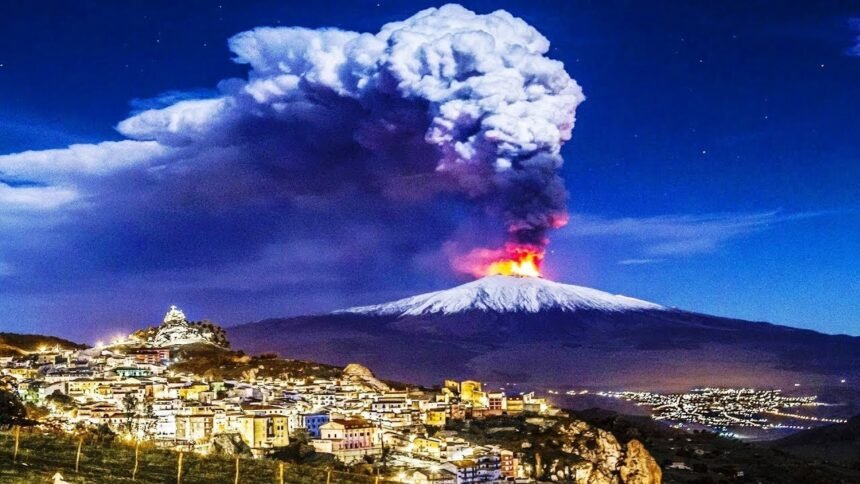Mount Etna, the highest active volcano in Europe and one of the most active in the world, has been erupting spectacularly since February 2021, sending plumes of ash and fountains of lava into the sky over Sicily. The latest eruption occurred on November 11, 2023, when a sudden explosion from the southeast summit crater produced a dense brown ash plume that rose a few hundred meters and quickly dispersed to the southwest
The eruption of Mount Etna, also known as Mongibello or Aetna, has been captivating the attention of locals and tourists alike, who have been witnessing the fiery show from various viewpoints around the island. The eruption has also been monitored by scientists and authorities, who have been assessing the impact and risks of the volcanic activity on the environment and the population.
Mount Etna is located on the east coast of Sicily, in the Metropolitan City of Catania, between the cities of Messina and Catania. It is situated above the convergent plate margin between the African Plate and the Eurasian Plate, which causes frequent seismic and volcanic activity in the region. Mount Etna covers an area of 1,190 square kilometers (459 square miles) with a basal circumference of 140 kilometers (87 miles). It has a current height of 3,357 meters (11,014 feet), though this varies with summit eruptions.
Also read : Ice Crisis: Five Times Faster Greenland Glacier Melting Than Twenty Years Ago
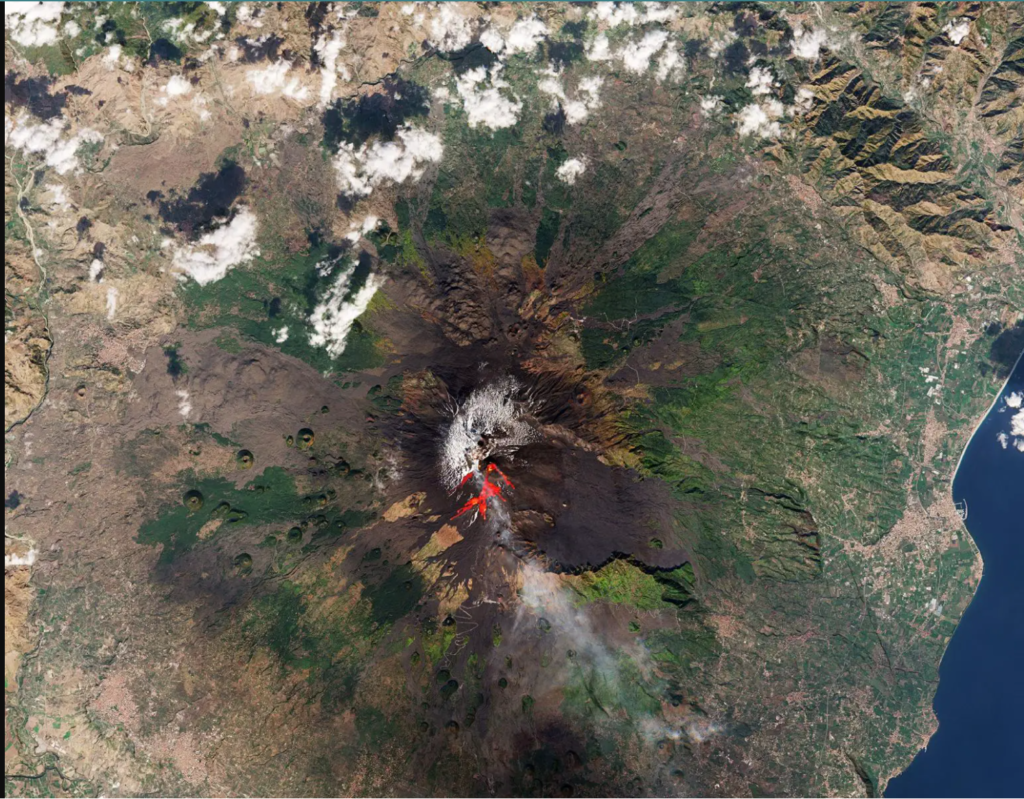
Mount Etna has a complex volcanic structure, consisting of two central craters (the Northeast Crater and the Voragine Crater), two lateral craters (the Southeast Crater and the New Southeast Crater), and numerous fissures and vents on its flanks. The volcano has four main eruptive styles: explosive eruptions from the central craters, lava fountains from the lateral craters, lava flows from the fissures, and phreatic eruptions from the hydrothermal system.
Mount Etna has a long and rich history of eruptions, dating back to ancient times. According to Greek mythology, the deadly monster Typhon was trapped under the mountain by Zeus, the king of the gods, and the forges of Hephaestus, the god of fire and metalworking, were located underneath it. The first recorded eruption of Mount Etna was in 475 BC, when the Greek historian Thucydides mentioned it in his History of the Peloponnesian War. Since then, the volcano has erupted more than 200 times, with varying degrees of intensity and frequency.
Some of the most notable eruptions of Mount Etna are:
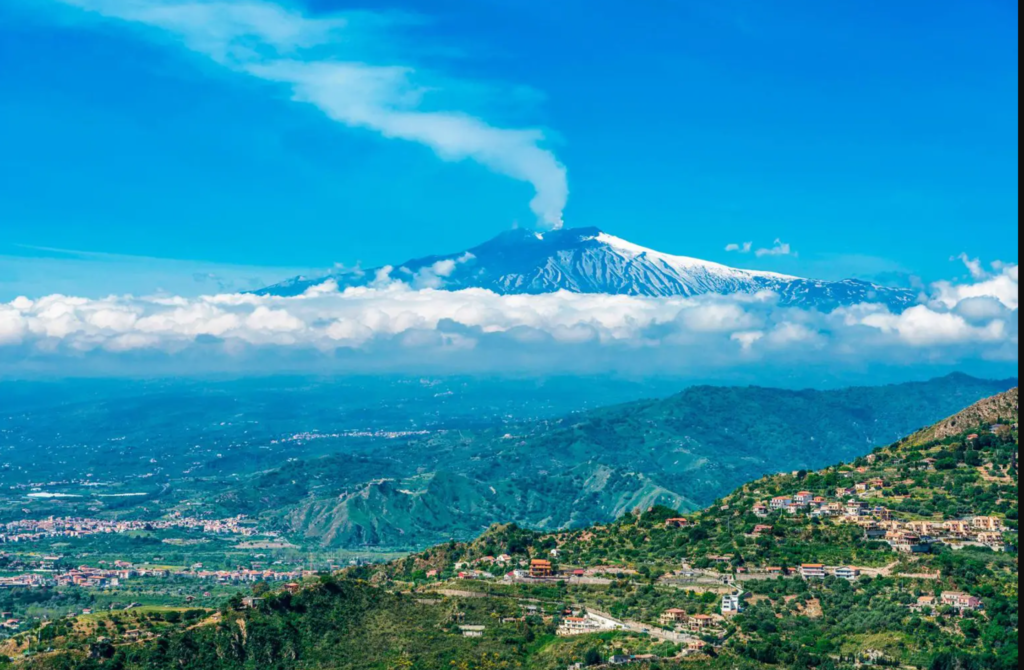
- The 1669 eruption, which was the largest recorded historical eruption of the volcano, lasting for four months and producing about 1 cubic kilometer (0.24 cubic miles) of lava. The eruption destroyed part of the summit and opened a fissure on the southeast flank, which reached the sea and the town of Catania, more than 16 kilometers (10 miles) away. The eruption also caused the formation of the Monti Rossi, a group of cinder cones near Nicolosi.
- The 1928 eruption, which was the first eruption to threaten a large city, namely Catania, since 1669. The eruption started from a fissure on the northeast flank and produced a lava flow that reached the coast and buried the village of Mascali. The eruption also created a new crater, named the Bocca Nuova (New Mouth).
- The 1983 eruption, which was one of the most destructive eruptions of the 20th century, causing extensive damage to infrastructure and agriculture. The eruption began from a fissure on the northeast flank and produced lava flows that cut the Circumetnea railway and the Catania-Messina highway, and threatened the town of Zafferana Etnea. The eruption also generated violent explosions and ash emissions from the summit craters.
- The 1991-1993 eruption, which was the longest continuous eruption of the volcano, lasting for 473 days. The eruption started from a fissure on the southeast flank and produced lava flows that covered about 7 square kilometers (2.7 square miles) of land and destroyed several buildings and roads. The eruption also caused the collapse of the Southeast Crater and the formation of the New Southeast Crater.
- The 2001 eruption, which was one of the most spectacular eruptions of the volcano, producing lava fountains up to 1 kilometer (0.6 miles) high and ash plumes up to 10 kilometers (6 miles) high. The eruption occurred from several fissures on the south and southeast flanks and produced lava flows that reached the lower slopes and the Valle del Bove (Valley of the Ox). The eruption also caused several earthquakes and landslides.
- The 2002-2003 eruption, which was one of the most explosive eruptions of the volcano, generating pyroclastic flows, lava bombs, and ash falls. The eruption originated from the Northeast Crater and the New Southeast Crater and produced lava flows that reached the town of Linguaglossa and the ski resort of Piano Provenzana. The eruption also damaged the astronomical observatory and the tourist facilities on the north flank.
- The 2011-2013 eruption, which was a series of 25 paroxysmal events, or episodes of intense lava fountaining and ash emission, from the New Southeast Crater. The events occurred at irregular intervals, ranging from a few days to a few months, and lasted from a few minutes to a few hours. The events produced lava flows that reached the Valle del Bove and ash plumes that affected the air traffic and the nearby towns.
- The 2021-2023 eruption, which is the current ongoing eruption of the volcano, characterized by frequent lava fountains and ash plumes from the New Southeast Crater and the Southeast Crater. The eruption has produced lava flows that have covered about 2 square kilometers (0.8 square miles) of land and ash falls that have reached the cities of Catania and Syracuse. The eruption has also increased the height of the New Southeast Crater by about 30 meters (98 feet).
What are the impacts and risks of Mount Etna’s eruption?
The eruption of Mount Etna has various impacts and risks on the environment and the population, both positive and negative. Some of the impacts and risks are:
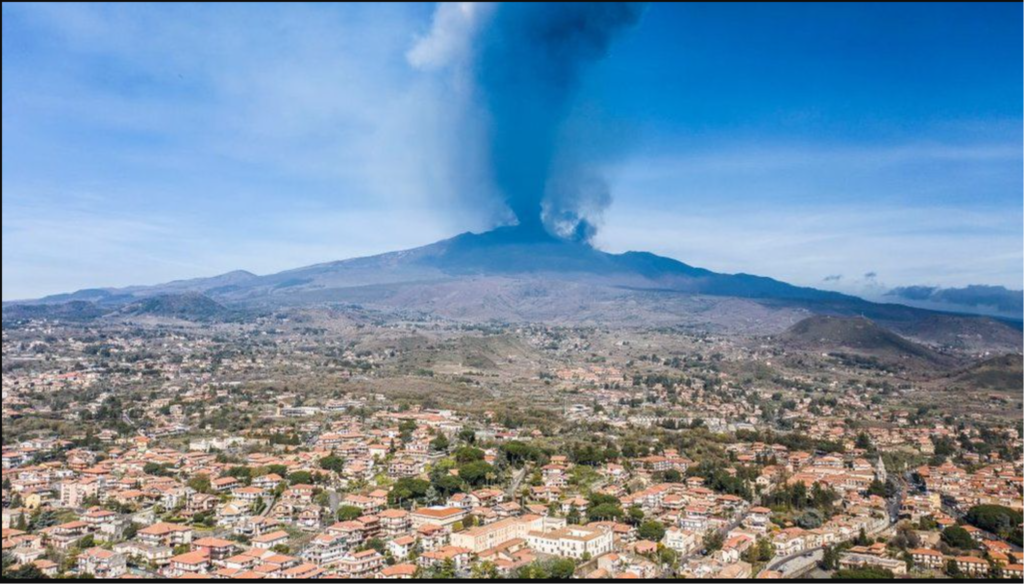
- Air quality and health: The ash plumes from the eruption can reduce the visibility and the air quality, affecting the respiratory health of people and animals, especially those with asthma or other lung diseases. The ash can also irritate the eyes and the skin, and cause coughing, sneezing, and sore throat. The ash can also contaminate the water sources and the crops, posing a risk of ingestion and poisoning.
- Climate and weather: The ash plumes from the eruption can alter the climate and the weather, by reflecting and absorbing the solar radiation, cooling or warming the atmosphere, and changing the cloud formation and precipitation patterns. The ash can also affect the ozone layer, by depleting or enhancing it, depending on the chemical composition and the altitude of the plume.
- Volcanic hazards: The eruption can pose various hazards to the people and the property near the volcano, such as lava flows, pyroclastic flows, lava bombs, ash falls, landslides, earthquakes, and tsunamis. These hazards can cause injuries, deaths, damage, evacuation, and disruption of the daily life and the economic activities.
- Volcanic benefits: The eruption can also have some benefits for the environment and the population, such as enriching the soil with minerals and nutrients, creating new landforms and habitats, providing geothermal energy and tourism opportunities, and inspiring scientific research and education.
How can we cope with Mount Etna’s eruption?
The eruption of Mount Etna is a natural phenomenon that cannot be prevented or controlled, but it can be prepared for and mitigated. Some of the ways to cope with Mount Etna’s eruption are:
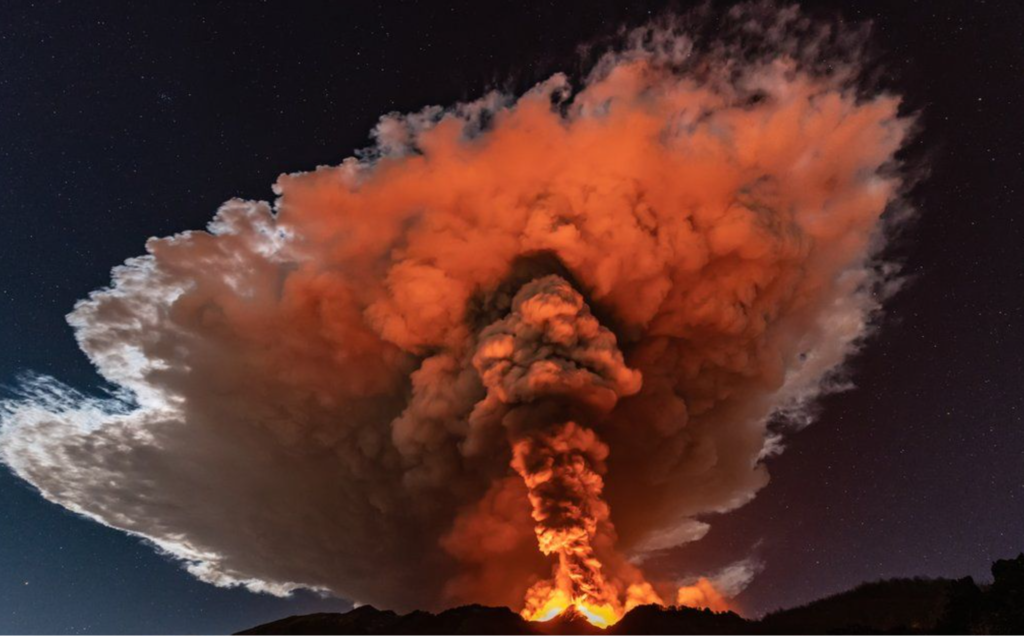
- Monitoring and forecasting: The eruption is constantly monitored and forecasted by the National Institute of Geophysics and Volcanology (INGV), which operates a network of sensors and cameras around the volcano, and issues regular bulletins and alerts on the volcanic activity and the hazards. The INGV also collaborates with other national and international institutions, such as the Civil Protection Department, the Italian Air Force, and the Volcanic Ash Advisory Center, to coordinate the response and the communication.
- Risk assessment and management: The eruption is assessed and managed by the Civil Protection Department, which evaluates the risk level and the impact of the eruption, and implements the emergency plan and the contingency measures. The Civil Protection Department also works with the local authorities and the stakeholders, such as the municipalities, the regions, the fire brigades, the police, the health services, and the media, to ensure the safety and the assistance of the population.
- Education and awareness: The eruption is an opportunity to educate and raise awareness among the public about the volcano and its hazards, and to promote a culture of prevention and resilience. The education and awareness activities can include information campaigns, workshops, exhibitions, publications, documentaries, and webinars, targeting different audiences, such as students, teachers, tourists, journalists, and policymakers.
Also read : Demystifying Particle Accelerators: A Simple Guide To Their Inner Workings







